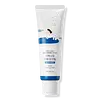What's inside
What's inside
 Key Ingredients
Key Ingredients

 Benefits
Benefits

 Concerns
Concerns

 Ingredients Side-by-side
Ingredients Side-by-side

Water
Skin ConditioningCaprylic/Capric Triglyceride
MaskingGlycereth-26
HumectantEthylhexyl Methoxycinnamate
UV AbsorberEthylhexyl Salicylate
UV AbsorberDimethicone
EmollientBis-Ethylhexyloxyphenol Methoxyphenyl Triazine
Skin ConditioningTitanium Dioxide
Cosmetic ColorantPolysorbate 60
EmulsifyingNiacinamide
SmoothingTranexamic Acid
AstringentGlyceryl Stearate
EmollientPEG-100 Stearate
Dipropylene Glycol
HumectantHydroxyethyl Acrylate/Sodium Acryloyldimethyl Taurate Copolymer
Emulsion StabilisingHydroxyacetophenone
AntioxidantC12-16 Alcohols
EmollientSorbitan Sesquioleate
EmulsifyingCyclopentasiloxane
EmollientAluminum Hydroxide
EmollientCaprylyl Glycol
EmollientSodium Polyacrylate
AbsorbentHydrogenated Lecithin
EmulsifyingEthylhexyl Stearate
EmollientStearic Acid
CleansingPalmitic Acid
EmollientHydrogen Dimethicone
Xanthan Gum
EmulsifyingDimethicone/Vinyl Dimethicone Crosspolymer
Skin ConditioningSorbitan Isostearate
EmulsifyingTrideceth-6
EmulsifyingDisodium EDTA
Dipotassium Glycyrrhizate
HumectantParfum
MaskingWater, Caprylic/Capric Triglyceride, Glycereth-26, Ethylhexyl Methoxycinnamate, Ethylhexyl Salicylate, Dimethicone, Bis-Ethylhexyloxyphenol Methoxyphenyl Triazine, Titanium Dioxide, Polysorbate 60, Niacinamide, Tranexamic Acid, Glyceryl Stearate, PEG-100 Stearate, Dipropylene Glycol, Hydroxyethyl Acrylate/Sodium Acryloyldimethyl Taurate Copolymer, Hydroxyacetophenone, C12-16 Alcohols, Sorbitan Sesquioleate, Cyclopentasiloxane, Aluminum Hydroxide, Caprylyl Glycol, Sodium Polyacrylate, Hydrogenated Lecithin, Ethylhexyl Stearate, Stearic Acid, Palmitic Acid, Hydrogen Dimethicone, Xanthan Gum, Dimethicone/Vinyl Dimethicone Crosspolymer, Sorbitan Isostearate, Trideceth-6, Disodium EDTA, Dipotassium Glycyrrhizate, Parfum
Butyl Methoxydibenzoylmethane 2.7%
UV AbsorberHomosalate 13.5%
Skin ConditioningEthylhexyl Salicylate 4.5%
UV AbsorberWater
Skin ConditioningButyloctyl Salicylate
Skin ConditioningPropanediol
SolventAcrylates Copolymer
Butylene Glycol
HumectantCaprylyl Methicone
Skin ConditioningPolyglyceryl-3 Distearate
EmulsifyingBenzotriazolyl Dodecyl P-Cresol
UV AbsorberNiacinamide
SmoothingDiethylhexyl 2,6-Naphthalate
EmollientPolymethylsilsesquioxane
Glycerin
HumectantCalcium Aluminum Borosilicate
1,2-Hexanediol
Skin ConditioningPoly C10-30 Alkyl Acrylate
Emulsion StabilisingPentylene Glycol
Skin ConditioningCetearyl Alcohol
EmollientTromethamine
BufferingMethylpropanediol
SolventGlyceryl Stearate Citrate
EmollientBetula Platyphylla Japonica Juice
Skin ConditioningAcrylates/C10-30 Alkyl Acrylate Crosspolymer
Emulsion StabilisingCarbomer
Emulsion StabilisingEthylhexylglycerin
Skin ConditioningArtemisia Annua Extract
MaskingAnthemis Nobilis Flower Oil
MaskingSodium Stearoyl Glutamate
CleansingGlyceryl Polymethacrylate
Triethoxycaprylylsilane
Pinus Sylvestris Leaf Oil
MaskingSparassis Crispa Extract
Emulsion StabilisingPolyether-1
Allantoin
Skin ConditioningDipropylene Glycol
HumectantGlyceryl Glucoside
HumectantBiosaccharide Gum-1
HumectantTocopherol
AntioxidantPortulaca Oleracea Extract
Skin ConditioningSodium Hyaluronate
HumectantHyaluronic Acid
HumectantAscorbic Acid
AntioxidantButyl Methoxydibenzoylmethane 2.7%, Homosalate 13.5%, Ethylhexyl Salicylate 4.5%, Water, Butyloctyl Salicylate, Propanediol, Acrylates Copolymer, Butylene Glycol, Caprylyl Methicone, Polyglyceryl-3 Distearate, Benzotriazolyl Dodecyl P-Cresol, Niacinamide, Diethylhexyl 2,6-Naphthalate, Polymethylsilsesquioxane, Glycerin, Calcium Aluminum Borosilicate, 1,2-Hexanediol, Poly C10-30 Alkyl Acrylate, Pentylene Glycol, Cetearyl Alcohol, Tromethamine, Methylpropanediol, Glyceryl Stearate Citrate, Betula Platyphylla Japonica Juice, Acrylates/C10-30 Alkyl Acrylate Crosspolymer, Carbomer, Ethylhexylglycerin, Artemisia Annua Extract, Anthemis Nobilis Flower Oil, Sodium Stearoyl Glutamate, Glyceryl Polymethacrylate, Triethoxycaprylylsilane, Pinus Sylvestris Leaf Oil, Sparassis Crispa Extract, Polyether-1, Allantoin, Dipropylene Glycol, Glyceryl Glucoside, Biosaccharide Gum-1, Tocopherol, Portulaca Oleracea Extract, Sodium Hyaluronate, Hyaluronic Acid, Ascorbic Acid
 Reviews
Reviews

Ingredients Explained
These ingredients are found in both products.
Ingredients higher up in an ingredient list are typically present in a larger amount.
Dipropylene Glycol is a synthetically created humectant, stabilizer, and solvent.
This ingredient helps:
Dipropylene glycol is technically an alcohol, but it belongs to the glycol family (often considered part of the ‘good’ alcohols). This means it is hydrating and gentle on skin unlike drying solvent alcohols like denatured alcohol.
As a masking agent, Dipropylene Glycol can be used to cover the smell of other ingredients. However, it does not have a scent.
Studies show Dipropylene Glycol is considered safe to use in skincare.
Learn more about Dipropylene GlycolEthylhexyl Salicylate is an organic compound used to block UV rays. It primarily absorbs UVB rays but offers a small amount of UVA protection as well.
Commonly found in sunscreens, Ethylhexyl Salicylate is created from salicylic acid and 2-ethylhexanol. You might know salicylic acid as the effective acne fighter ingredient and BHA.
The ethylhexanol in this ingredient is a fatty alcohol and helps hydrate your skin, similar to oils. It is an emollient, which means it traps moisture into the skin.
According to manufacturers, Ethylhexyl Salicylate absorbs UV wavelength of 295-315 nm, with a peak absorption at 307-310 nm. UVA rays are linked to long term skin damage, such as hyperpigmentation. UVB rays emit more energy and are capable of damaging our DNA. UVB rays cause sunburn.
Learn more about Ethylhexyl SalicylateNiacinamide is a multitasking form of vitamin B3 that strengthens the skin barrier, reduces pores and dark spots, regulates oil, and improves signs of aging.
And the best part? It's gentle and well-tolerated by most skin types, including sensitive and reactive skin.
You might have heard of "niacin flush", or the reddening of skin that causes itchiness. Niacinamide has not been found to cause this.
In very rare cases, some individuals may not be able to tolerate niacinamide at all or experience an allergic reaction to it.
If you are experiencing flaking, irritation, and dryness with this ingredient, be sure to double check all your products as this ingredient can be found in all categories of skincare.
When incorporating niacinamide into your routine, look out for concentration amounts. Typically, 5% niacinamide provides benefits such as fading dark spots. However, if you have sensitive skin, it is better to begin with a smaller concentration.
When you apply niacinamide to your skin, your body converts it into nicotinamide adenine dinucleotide (NAD). NAD is an essential coenzyme that is already found in your cells as "fuel" and powers countless biological processes.
In your skin, NAD helps repair cell damage, produce new healthy cells, support collagen production, strengthen the skin barrier, and fight environmental stressors (like UV and pollution).
Our natural NAD levels start to decline with age, leading to slower skin repair, visible aging, and a weaker skin barrier. By providing your skin niacinamide, you're recharging your skin's NAD levels. This leads to stronger, healthier, and younger looking skin.
Another name for vitamin B3 is nicotinamide. This vitamin is water-soluble and our bodies don't store it. We obtain Vitamin B3 from either food or skincare. Meat, fish, wheat, yeast, and leafy greens contain vitamin B3.
The type of niacinamide used in skincare is synthetically created.
Learn more about NiacinamideWater. It's the most common cosmetic ingredient of all. You'll usually see it at the top of ingredient lists, meaning that it makes up the largest part of the product.
So why is it so popular? Water most often acts as a solvent - this means that it helps dissolve other ingredients into the formulation.
You'll also recognize water as that liquid we all need to stay alive. If you see this, drink a glass of water. Stay hydrated!
Learn more about Water